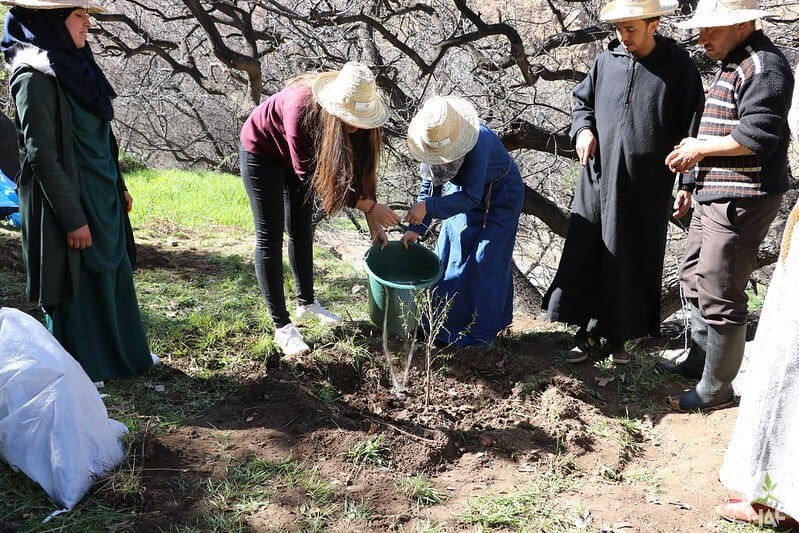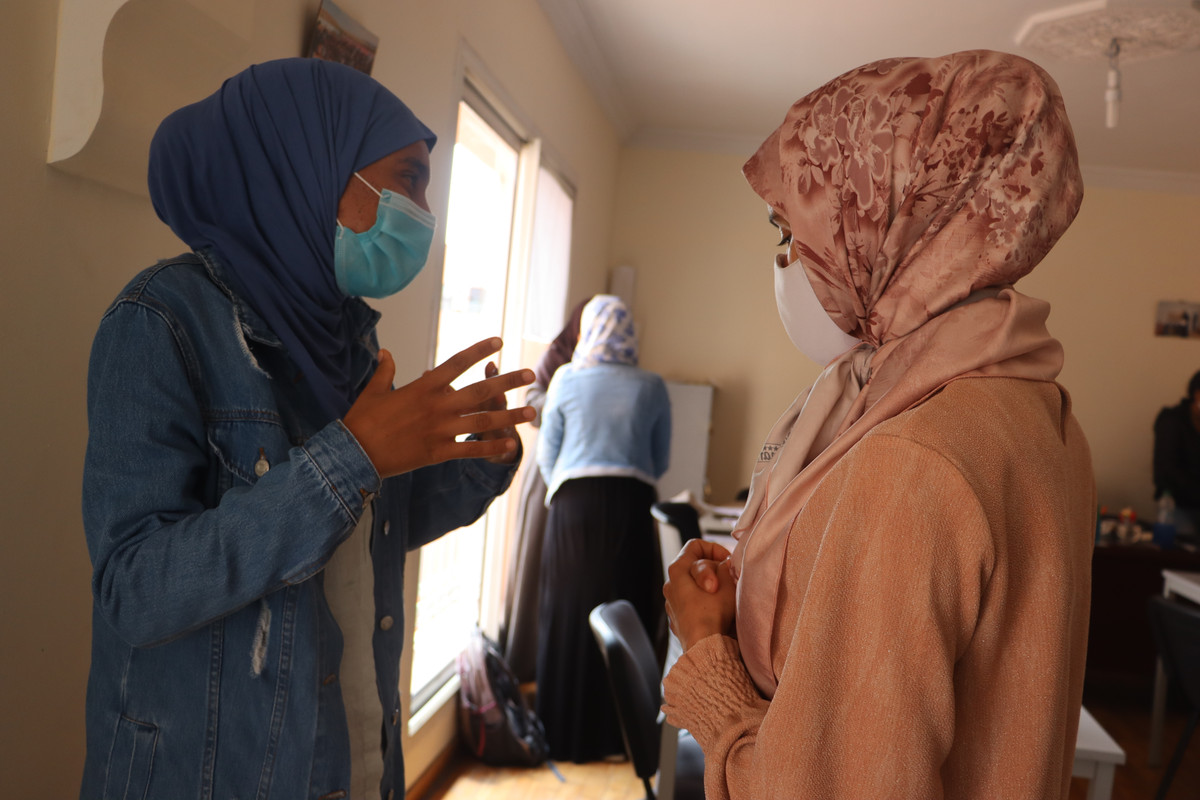Heart disease is a prevalent chronic disease in Morocco and has been one of the leading causes of death over the last 10 years. Heart disease can be prevented through lifestyle changes, but people must be made aware of the steps they should take to effectively curb this health concern. As heart disease is interconnected with the way we care and love our bodies, it can be addressed and, ultimately, reduced through programs that empower women to become more in touch with their bodies.
The Causes of Cardiovascular Disease (CVD) and Heart Disease (HD)
There is a multitude of factors that increase the risk of heart disease globally and specifically in Morocco. The first of these is limited access to healthy foods and the subsequent consumption of excessively processed foods. In recent years, convenience has been prioritized over health when it comes to food. For example, there has been a shift from personal homegrown foods to processed crops like wheat flour and imported vegetables that use preservatives because healthy foods are more expensive and harder to access. Additionally, the country has also seen a spike in high-sugar processed foods that have been shown to negatively affect blood pressure and weight, which are precursors to heart disease. Another big risk factor is lack of physical activity, as this leads to the heart having to work extremely hard when people do exercise, thus increasing the risk of high blood pressure and heart disease.
The American Heart Association recommends 150 minutes of activity per week for all adults to maintain good heart health; a recommendation that many people globally fail to meet. Tobacco use is also a huge concern and risk because smoking puts extra strain on the heart by tightening arteries. The smoke can create plaque inside the arteries that narrows the space where blood may flow. In a 2017-2018 study, approximately 13.4 percent of the Moroccan population used some form of tobacco, and 9/10 smokers began before the age of 18, making tobacco use a factor to especially monitor. Many risk factors can contribute to cardiovascular disease, but these are just a few of the most significant that contribute to CVD.
The Issue of Heart Disease in Morocco
It is important to recognize that heart disease is prominent worldwide, but it is a more serious issue in middle- to low-income countries due to the lack of prevention programs, healthcare access, and limited early detection methods. In comparison, Morocco has no early detection methods, whereas any high-risk individuals in the U.S. tend to be diagnosed earlier on in their lives. Additionally, in rural areas of Morocco, the limited access to healthcare resources is a big issue once the disease has been developed because methods of treatment are less effective or inadequate. Therefore, it is key to focus on primary prevention mechanisms like lifestyle changes to try to prevent heart disease from occurring in the first place.
Lifestyle Changes & the Future
After addressing the risk factors for HD and the extent of the issue have been addressed, the next step is to discuss how people can work towards preventing CVD. To lower the risk of developing heart disease, there are a variety of recommendations related to risk factors: stop tobacco use, reduce salt intake, consume natural homegrown fruits and vegetables, increase daily physical activity, and watch for warning signs like high blood pressure, diabetes, and weight gain. These prevention mechanisms are the ideal method in changing the course of heart disease in Morocco and can prevent additional comorbidities, including stroke.
Heart Disease & Empowerment Workshops
The morbidity of heart disease can be looked at through the lens of empowerment, including loving our bodies. In the High Atlas Foundation’s Imagine empowerment workshops, a module on the body focuses on how it provides us with the ability to sense earth’s pleasures and its function as a vessel for ideas, vitality, and feelings. The focus on care for the body has the potential to contribute to the prevention of heart disease in Moroccan communities. This can be done by proposing thought-provoking questions, including “How many natural foods would say you nourish your body within a week?” “How do you think exercise would help you improve your love for yourself?” and “What is one thing you are committed to doing in improving your overall health and heart health, and how will this impact your future body?”
By presenting questions like these to the participants in the workshops, it allows them to recognize how certain behaviors can have long-term effects and show how they can work towards preventing future health complications. Additionally, the use of infographics and visually appealing resources that advocate the major prevention mechanisms and how they improve the body would help aid in progress after the workshops are complete.
The Body
The body is one of the seven core components of life, and in the Imagine workshops, women focus on the current state of their body and how it will look in the future based on different activities. One of these activities is body dialogue, where women take a period of time to check in with their body to see what it needs and what is right. Another is a body vision, in which women think about how it would look to live in their ideal body outside of societal expectations.
The key to these workshops is that the thoughts and actions women take pertain to them as an individual level rather than as a collective unit. Being thought of as an average part of the group does not provide a strong sense of empowerment. This workshop module helps women to analyze current routines and mindsets and alter them to uniquely make each participant’s life better. Within the topic of heart disease, there are many actions that women do not realize are beneficial due to a lack of education on heart-healthy behaviors. When these behaviors are put into limiting beliefs and turnarounds, women can then see how their body is such a great gift – and that healthy eating is good, and exercise not a chore – but nourishment.
Many diseases are quite ambiguous as to the factors that cause them. Heart disease, however, can be almost completely traced to how people care for their bodies. The body element of these empowerment workshops is directly integrated into heart health through diet, exercise, and limiting drug use. It is key that women are given the opportunity to familiarize themselves with their bodies in order to encourage a positive mindset that can keep them healthy and prevent diseases. The same mechanisms used in helping participants improve their relationship with their bodies are the same in keeping the heart healthy, making heart disease a beneficial integration into empowerment curricula.
Conclusion
By addressing cardiovascular disease in women’s empowerment programming, we can help Moroccan women to respect and love their bodies, improve their health, and simultaneously reduce heart disease and its risk factors. These workshops not only help women to become better versions of themselves and become healthier, but they also impact society by empowering women to become more active community members. Whether they go to school after or decide to find a new career, improving women’s health through empowerment and public health efforts, Moroccan communities can be improved as a whole. As a leading cause of death in Morocco and globally, we must raise awareness of this a crucial issue towards improving the overall heart health of the Moroccan people.
Carlie Daniel is an Intern with the High Atlas Foundation and a student at the University of Virginia.





